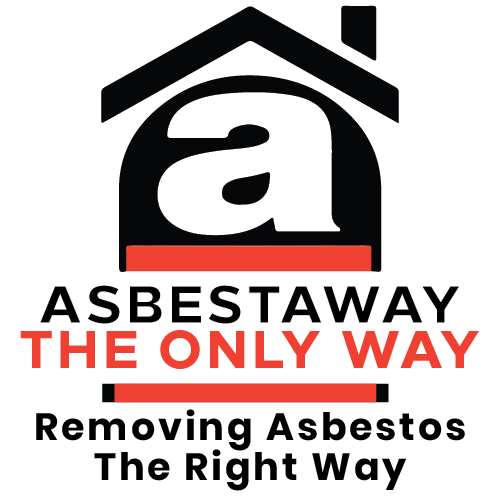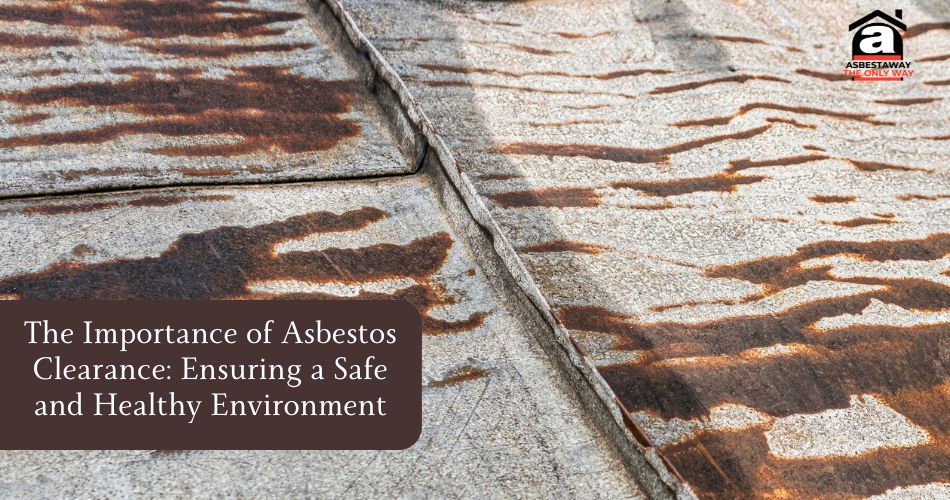How can you ensure your home or workplace is safe from hidden dangers? Ensuring a safe and healthy environment is a top priority, and asbestos clearance plays a crucial role in achieving this. Asbestos, once widely used for its fire-resistant properties, has since been identified as a significant health hazard. Asbestos can be found in many older buildings, hiding in insulation, roofing materials, floor tiles, and more. Proper asbestos removal is critical to reducing the dangers associated with exposure, which can lead to serious respiratory illnesses and other health issues.
This guide delves into the significance of asbestos removal, explaining why it is necessary for preserving a safe living and working environment.
What Is Asbestos & Asbestos Clearance?
Asbestos is a group of naturally occurring fibrous minerals known for their durability, heat resistance, and insulating properties. Historically, it was widely utilized in construction materials such as insulation, roofing, floor tiles, and cement products until its serious health risks were discovered When asbestos-containing materials (ACMs) are disturbed, they release tiny fibers into the air. These fibers, when inhaled, can become lodged in the lungs, leading to severe health issues such as asbestosis, lung cancer, and mesothelioma.
Asbestos clearance involves a meticulous process to ensure safety and compliance. This includes inspecting the property to locate and identify ACMs, assessing the condition and potential risk of the identified asbestos, and safely removing ACMs using specialized equipment and protective measures. The process also involves transporting and disposing of asbestos waste at designated facilities in compliance with local regulations and conducting a post-removal inspection to confirm that all asbestos has been effectively cleared and the area is safe for reoccupation. By following these steps, asbestos clearance ensures that any potential health risks are mitigated, and the environment remains safe.
Health Risks Associated with Asbestos Exposure
Exposure to asbestos fibers, whether short-term or long-term, poses significant health risks, including respiratory diseases and cancers. Understanding these dangers is critical for asbestos management and protection.
- Short-term Exposure
While short-term asbestos exposure is usually thought to be less dangerous than long-term exposure, it can yet offer serious health hazards, particularly at high levels. Breathing in asbestos fibers can irritate the eyes, nose, and throat, and in certain circumstances, cause respiratory problems such as shortness of breath or continuous coughing. Though short-term exposure is less likely to result in serious health problems, it is still critical to limit any interaction with asbestos in order to avoid long-term effects that can lead to more serious illnesses over time. - Long-term Exposure
Long-term asbestos exposure is extensively reported as a significant health risk. Prolonged inhalation of asbestos fibers can result in significant respiratory disorders such as asbestosis (a chronic lung condition that causes damage of lung tissue), lung cancer, and mesothelioma. These conditions typically develop many years after the initial exposure, often making early diagnosis and treatment challenging. The latency period for these diseases can be several decades, and the risk increases with the duration and intensity of exposure. - Vulnerable Populations
Certain populations are more vulnerable to the health risks linked with asbestos exposure. This includes people who work in industries such as construction, shipbuilding, and manufacturing, where asbestos-containing materials were commonly used. Additionally, older buildings and homes may still contain asbestos insulation or other materials, posing a risk to maintenance workers and residents. Children and the elderly are especially vulnerable due to their developing or weakened respiratory systems. Moreover, family members of workers exposed to asbestos may be at risk through indirect exposure, as fibers can be brought home on clothing and personal belongings.
The Importance of Asbestos Clearance
Asbestos removal is critical for avoiding major health risks, guaranteeing legal compliance, reducing environmental effect, and providing economic benefits by preserving property safety and value. Some of the importance are:-
- Preventing Health Hazards
Asbestos clearance is critical in preventing health risks associated with exposure to asbestos fibers. By carefully removing or isolating asbestos-containing materials, the risk of releasing fibers into the air is significantly reduced, thereby protecting the health of building residences and workers. This is especially important in settings such as schools, hospitals, and residential buildings, where prolonged exposure could lead to serious health issues. - Legal Compliance
To protect public health, several countries have strict regulations in place for asbestos handling, removal, and disposal. Compliance with these standards is critical for avoiding legal penalties and ensuring the safety of all individuals. Failure to manage asbestos correctly can result in large fines, legal action, and reputational damage. As a result, asbestos removal is not just a health concern, but also a legal necessity for homeowners and businesses. - Environmental Impact
Asbestos badly handled and disposed of can pollute the environment, harming soil, water sources, and the whole ecosystem. Asbestos fibers are resistant to decomposition and can remain in the environment for a long period of time, causing ongoing dangers to wildlife and human health. Proper asbestos clearance and disposal procedures are essential to minimize environmental impact and prevent the spread of contaminants. - Economic Benefits
Investing in asbestos removal can provide significant economic benefits. Property owners and businesses can save money by avoiding health problems and legal consequences. Furthermore, asbestos-free buildings are often more profitable and appealing to purchasers and tenants, hence increasing property values and potential for sale. Furthermore, early and effective asbestos management can lessen the need for costly removal activities in the future.
Process of Asbestos Clearance
The process of asbestos clearance is very important to know and understand. Some of the proccessed involved in asbestos clearance is as follows:
- Initial Inspection
The asbestos removal process starts with a thorough initial inspection. This entails thoroughly inspecting the building or site to determine the presence of asbestos-containing materials (ACMs). Qualified inspectors, who are frequently certified by regulatory authorities, detect and sample suspicious compounds using specific equipment. During this step, the inspector records the location, condition, and amount of asbestos, resulting in a detailed report that serves as the foundation for the risk assessment and clearance plan. - Risk Assessment
Following the initial examination, a risk assessment is carried out to determine the potential health concerns connected with the discovered asbestos. This assessment takes into considerations of a variety of elements, including the type of asbestos present, its state (friable or non-friable), the likelihood of fiber release, and the level of human exposure. The risk assessment helps to establish the urgency and scope of the clearance actions. It also guides the selection of appropriate control measures to ensure the safety of the removal process. - Professional Clearance
Professional clearance is the safe removal or encapsulation of asbestos-containing items by licensed asbestos abatement professionals who adhere to rigorous safety measures to prevent fiber release. Personal protection equipment (PPE) worn by workers includes respirators, disposable coveralls, and gloves. Asbestos materials are carefully deconstructed and removed using procedures that reduce fiber release, such as soaking materials to control dust. Non-removable asbestos is enclosed with sealants to prevent fiber escape. The final stages are to thoroughly clean the work space and decontaminate tools and equipment to remove any remaining asbestos fibers. - Post-Clearance Testing
After the asbestos removal is completed, post-clearance testing is performed to ensure that the area is safe for reoccupation. This test includes air sampling and surface testing to detect any leftover asbestos fibers. Independent, accredited laboratories examine the samples to ensure that fiber amounts are below regulatory limits. Only after passing these demanding tests is the region considered safe. The final stage is to provide a clearance certificate or report, which confirms the effective completion of the asbestos abatement and acts as a validation record for future reference and compliance.
Why Choose Asbestaway For Asbestos Clearance Services?
When you use Asbestaway for asbestos clearance services, you can be confident that you will receive the industry’s highest level of experience and professionalism. Our team of licensed and skilled asbestos removal professionals sticks to strict safety regulations to ensure the safe removal or encapsulation of asbestos-containing items, protecting both your health and the environment. We use modern technologies and procedures, such as upgraded containment and air filtering systems, to reduce fiber release and contamination.
Asbestaway also provides complete initial inspections and risk assessments, as well as detailed reports and customized clearing strategies to meet your individual requirements. Post-clearance testing by independent, authorized laboratories ensures that your space is safe to reoccupy, giving you piece of mind. Asbestaway is the preferred choice for all of your asbestos management needs due to our commitment to legal compliance, environmental responsibility, and customer satisfaction.
Conclusion
To summarize, asbestos clearance is a vital method for protecting health, maintaining legal compliance, and conserving the environment. Understanding the health dangers connected with both short-term and long-term asbestos exposure emphasizes the need for careful and expert asbestos management. Asbestaway offers outstanding solutions such as rigorous inspections, risk assessments, and the safe removal or encapsulation of asbestos-containing products. By using Asbestaway, you invest in a better, safer environment while taking advantage of our experience, services, and commitment to excellence. Ensure the safety of your property and the well-being of its occupants by entrusting Asbestaway with your asbestos clearance needs.

